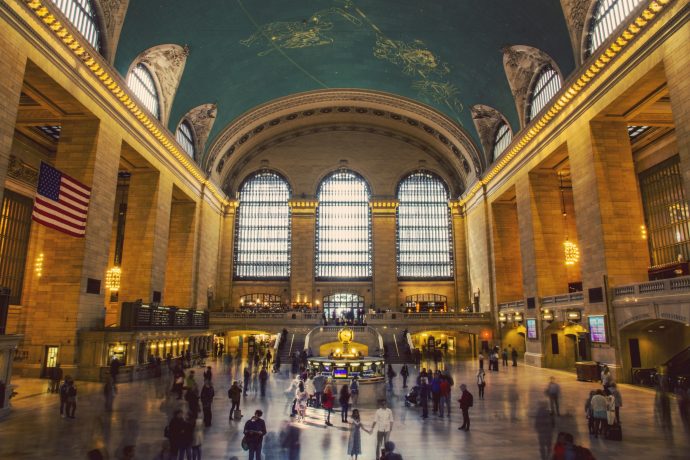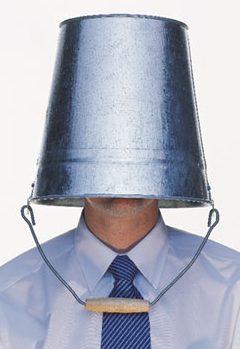Steve Johnson of ADI Workplace Acoustics explains how teaching your eyes to hear will improve the quality of experience for the occupants of the beautiful spaces that you create.
Talented designers are tasked with a multitude of decisions. Form, function, adjacency, circulation, light, color. Acoustics is an important factor to be considered in order for any workplace to satisfy its purpose: productive work. Great data is available from workplace researchers that indicates many work environments fall short in delivering the goal.
Over the last several years, Leesman has surveyed more than 350,000 employees across 2,700 workplaces in 69 countries. They measure and benchmark how effectively the workplace supports a high-quality employee experience. Interestingly, their data measures not only the degree of satisfaction with workplace features but also the relative importance of the item to their impression of the workplace.
Workplace Noise reports in with an impressive 74.6 percent importance rating. However, it stands out as a large problem with a lowly 30.5 percent satisfaction rating. This confirms what we see around us every day. Noise, specifically the distracting noise of co-worker’s conversations, is negatively impactful on workplace productivity. The ability of occupants to focus on work and to work comfortably without noisy distractions is vital to the success of a business.
Workplace design is driven heavily by visual senses. Yet sound is invisible. Designers will be well served by listening to spaces and training their eyes to hear. Materials interact with sound in different ways. Several examples are presented below that allow our visual memories to trigger acoustical perceptions.
Train Station
Imagine walking into grand central station. As you enter, your senses immediately detect the volume of the space. High ceilings create reverberant acoustics. Voices of the occupants blur into a loud background sound. You can carry on a conversation while face to face but you can’t understand speech from anyone that is not within a few feet of your ears.

A similar affect may be found in offices that have been constructed in high-bay warehouse space. Sound reverberates through the space and there is a constant buzz of changing background noise. Typically, these spaces are distracting and create fatigue.
Head in Bucket

Imagine putting a large metal bucket over your head while having a conversation on your cell phone. The sound of your voice overwhelms your senses. You talk louder to help overcome the distraction of your own voice. It is acoustically uncomfortable and it is uncomfortable for the person on the other end of the phone as they struggle to listen to your loud and reverberant speech.
We see similar conditions regularly in huddle rooms and phone rooms. Four walls of glass or sheetrock and little to no acoustically absorptive material creates a very effective “bucket”. Phone conversations are difficult and the louder voice, used unconsciously by the occupants, can be clearly overheard in surrounding spaces. The acoustics of the room defeat its purpose which is to provide a place for comfortable private conversation.
Bandshell
Imagine an old fashioned Bandshell shell in a park. If a person stands in the middle of the structure, her voice can be clearly heard at great distance. Sound waves are focused and beamed out in the direction of the opening. It augments the presentation of speech or music for all that sit nearby.

We see similar conditions in commercial office space “downstream” from curved glass walls or slabs of hard ceiling that are placed above areas where noise is created. Imagine a break area that opens to an open office. Conversations, laughter, microwave ovens and ice machines project their noise out with beautiful effectiveness to those that are attempting to work productively.
In reception areas with hard ceilings and glass walls, sound reflects the comings and goings of the day into the adjoining work space.
Creepy Quiet
Imagine you are alone at night in the middle of the woods. The silence is deafening. Then a twig snaps and you jump out of your seat with your heart pumping.
We see similar conditions in many office spaces. Most modern office buildings are very efficient. HVAC noise is very low leaving a space that, without people’s conversations, is very quiet. This allows even the softest of conversations to be heard and understood at great distance. Multiply this by the high density of today’s floor plans and you have a chicken coop full of voices and distractions.
For each of these conditions, there are solutions that can make spaces feel comfortable without compromising the desired visual experience.
Acoustical Solutions in Action
On a recent project, we worked with a talented Architect to solve a combination of these conditions. The space consists of about 60,000 square feet of open office, private offices and conference rooms. One of the conference rooms had walls of glass, sheetrock and a large television screen. The ceiling was also hard. The adjacent open office area was very quiet. This allowed conversations emanating from the conference room to be clearly understood.
Three out of four of our environmental descriptions are at play here: Head in Bucket, Bandshell and Creepy Quiet.
The solution required two key actions: Acoustically absorptive materials improved the Head in Bucket and Bandshell problems by reducing reflective sound. One key to the success was the installation of acoustical panels on the wall of a corridor that connected the conference rooms to the open area. Much of the sound transfer used the corridor to broadcast sound just like our Bandshell example. By placing materials on the wall that were highly absorptive, much of the sound was not able to make it out of the trap.
Next, a sound masking system was installed throughout the open office. By slightly raising the ambient background sound, the sounds of voices at distances beyond about 15 feet became very difficult to understand. Privacy in conference rooms was improved significantly and conversational distractions in the open office were reduced.
“Subtle architectural gestures and material selections can have a tremendous impact on the performance of the space,” says Chris Penndorf, Architect and Managing Principal of Project 308 Design in Alexandria, VA. “Following the implementation of the recommendations provided to us by ADI, we received immediate positive feedback regarding the improvement of the conditions on site from the end users. Reductions in reverberant noise from the addition of absorptive panels combined with the tunable sound masking yielded results that were discernible on the first day of use.”
Have You Trained Your Eyes to Hear?
Nearly every experience that we have has an acoustic component. From the quiet of a Sunday morning walk in the mountains to a loud restaurant in the city. As we experience each of these, we can observe the physical setting and mentally note the resulting acoustical effect on our perception.
Over time, practicing this observational exercise will build up an internal knowledge base that will allow your eyes to begin to hear.
You will see the exposed metal deck at 20’ and think: Train Station.
You will begin to hear the result of the close parallel walls in the phone room and you will think: “Head in the Bucket”.
You will see the marble floors, glass walls and hard-lid and think “Bandshell”.
You will see the large open office plan and think: Creepy Quiet.
Teaching your eyes to hear will improve the quality of experience for the occupants of the beautiful spaces that you create.



A fantastic article. I love the expression ‘creepy quiet’ which I have at time struggled to explain an environment, with too much acoustic absorption. There has to be a term for the feeling you get when you see a location and think too loud or creepy quiet…maybe it’s “acoustic realization”?
Great article. Acoustics historically have been the non-budgeted aspect of workplace design. With such a large portion of space as open office and community spaces, acoustics are more important than ever. The comment “creepy quiet also resonates with me. Years ago we were working with an association client on their workplace strategies engagement. The surveys and focus groups mentioned how the 4th floor was really loud. As part of the observational portion of work we observed by sitting quietly with our eyes closed. I was part of the observational team tasked with recording sound on the “loud” 4th floor space. I remember sitting there, eyes, closed, and hearing the swish of pants, the ticking of a clock and low voices. Hardly any sound at all! What the group perceived as loud was actually the opposite, too quiet!
Thanks for sharing more about acoustics. This is an important aspect for all sorts of office, retail, restaurant, medical and educational spaces.